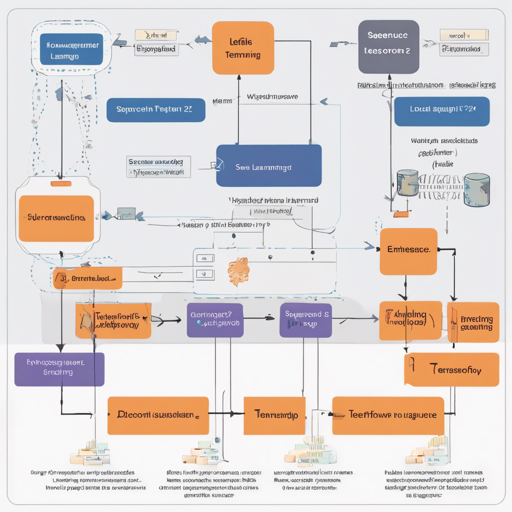In this blog, we’re diving into the world of Sequence to Sequence (seq2seq) learning using TensorFlow, focusing on RNN Encoder-Decoder architectures and incorporating the powerful Attention mechanism. Let’s break down the process into manageable steps and ensure that even those new to the field can follow along!
Dependencies
- NumPy = 1.11.1
- TensorFlow = 1.2
Data Preparation
The first step in our seq2seq journey is to prepare our data. We will be preprocessing our raw parallel data, which consists of a source code file and a target code file. To do this, simply run:
rubycd data.preprocess.sh src trg sample_data $max_seq_lenThis command performs essential machine translation preprocessing steps including:
- Normalizing punctuation
- Tokenizing
- Bytepair coding
- Cleaning sequences longer than a specified length
- Shuffling
- Building dictionaries
Training the Model
Now that our data is prepped, let’s move on to training our seq2seq model. You’ll need to execute the following command:
python train.py --cell_type lstm --attention_type luong --hidden_units 1024 --depth 2 --embedding_size 500 --num_encoder_symbols 30000 --num_decoder_symbols 30000 ...Decoding the Model
Once the model is trained, you can utilize it for decoding using the following command:
python decode.py --beam_width 5 --decode_batch_size 30 --model_path $PATH_TO_A_MODEL_CHECKPOINT --max_decode_step 300 --write_n_best False --decode_input $PATH_TO_DECODE_INPUT --decode_output $PATH_TO_DECODE_OUTPUTNote that if you set --beam_width=1, greedy decoding occurs at each time-step, providing a baseline comparison for more advanced methods.
Understanding the Code: An Analogy
To put everything in perspective, think of the coding process like preparing a delicious meal. The data preparation is akin to gathering and preparing your ingredients. You won’t get far without properly prepared veggies (data) in your recipe (model).
Next, consider training the model as the cooking phase where you mix those ingredients in specific steps and under precise conditions to develop the right flavors (features). Each parameter you tweak is similar to adjusting the heat level or the seasoning, impacting the final dish.
Finally, decoding is like serving your meal. How you present the dish (results) matters, and the method you choose (e.g., beam search) will alter the taste (output) of your culinary creation (decoded results). Just as one might choose to present their meal on a fancy plate or a simple one, the decorum of the decoding process also affects the perception of the outcome.
Troubleshooting Tips
If you face difficulties during any of the steps, consider these troubleshooting ideas:
- Ensure TensorFlow and NumPy versions are compatible with the code.
- Verify that the paths specified for your data and model checkpoints are correct.
- Check the terminal output for any errors – this can often guide you directly to the problem.
- Examine your command for syntax errors, especially in the arguments.
For more insights, updates, or to collaborate on AI development projects, stay connected with fxis.ai.
Conclusion
At fxis.ai, we believe that such advancements are crucial for the future of AI, as they enable more comprehensive and effective solutions. Our team is continually exploring new methodologies to push the envelope in artificial intelligence, ensuring that our clients benefit from the latest technological innovations.
With these guidelines, you’re well on your way to successfully implementing seq2seq learning with TensorFlow! Happy coding!

